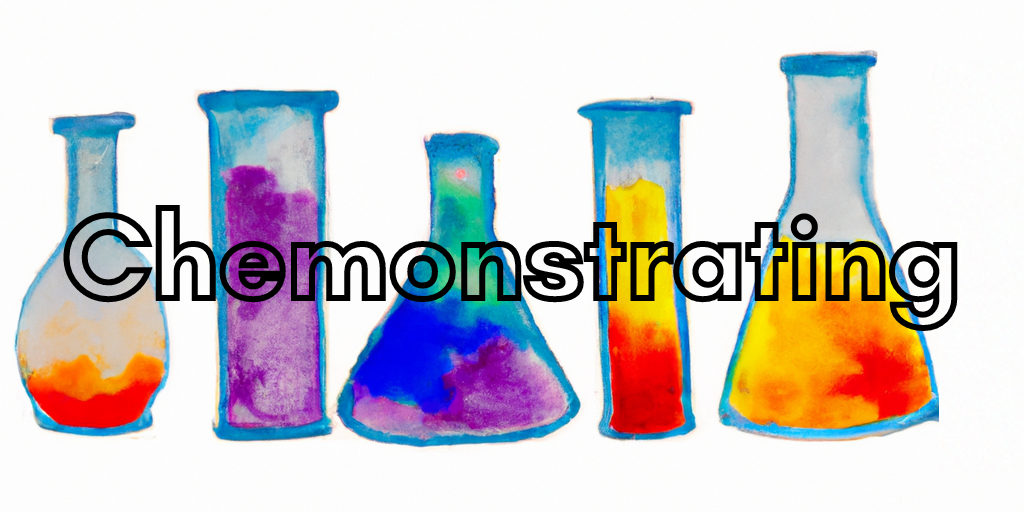Green and Blue Copper Complexes
Purpose:
To demonstrate that different ligands exhibit different colors in a coordination complex.
Materials:
- Pipette
- Large graduated cylinder
Reagents:
- Concentrated ammonia (NH3)
- Concentrated hydrochloric acid (HCl)
- 0.2M Copper sulfate (CuSO4⋅H2O(s))
Hazards and PPE:
- Copper sulfate is a skin irritant and harmful if ingested. Handle with care.
- Hydrochloric acid is acutely corrosive and toxic. Avoid skin contact and inhalation of fumes.
- Concentrated ammonia can cause severe skin burns and respiratory irritation, and is an extreme aquatic toxin. Store and handle with care.
- Wear approved safety goggles and gloves.
Protocol:
Demonstration
- Fill the graduated cylinder ~1/4 with CuSO4 solution.
- Add HCl until a pale green solution is formed.
- Use pipette to add NH3 until a deep blue color forms. The deep blue solution should sit above the green solution.
Disposal:
- Solutions should be placed in properly labeled waste containers.
Reactions:
- Cu(H2O)42+(aq) + 4Cl- ⇌ CuCl42-(aq) + 4H2O(l)
- CuCl42-(aq) + 4NH3 ⇌ Cu(NH3)42+(aq) + 4Cl-(aq)
- The tetraaquacopper (II) and tetraaminecopper (II) complexes have a square planar structure. The tetrachlorocopper (II) complex has a tetrahedron structure.
Citations:
- Summerlin, L., Borgford, C., & Ealy j. Chemical Demonstrations: A Sourcebook for Teachers, Volume 2, Second Edition, 1988.
Videos:
